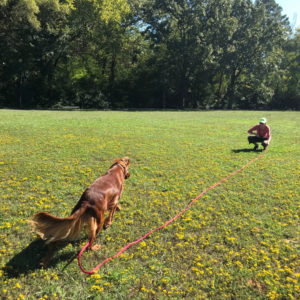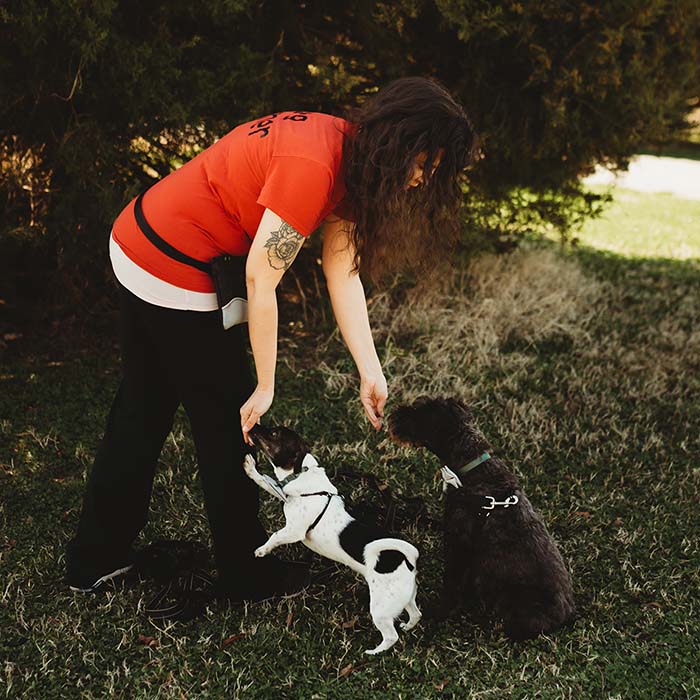I’m Not a Dog Whisperer
But I can get behaviors from your dog that you might struggle with. Here’s why.
I popped a treat in front of the puppy’s nose as I grabbed the leash from the owner. I’d asked if I could demonstrated a training cue, and the owner, visibly frustrated, said yes with that sort of relief that comes with releasing tension.
The puppy, who had only seconds earlier been avoiding her owner with all of her energy, was suddenly focused on me and willing to work.
“You’re a dog whisperer,” the owner said.
I always laugh a little awkwardly when someone says that to me, especially because I have no natural ability to train dogs. I didn’t grow up sending dogs through agility courses. I had to work really hard at not only understanding dogs, but learning how to train them and how to best teach their people how to handle them. It’s a lot of moving parts, but it’s easy, looking at me handling a stubborn dog, to think I’ve got some sort of magical touch.
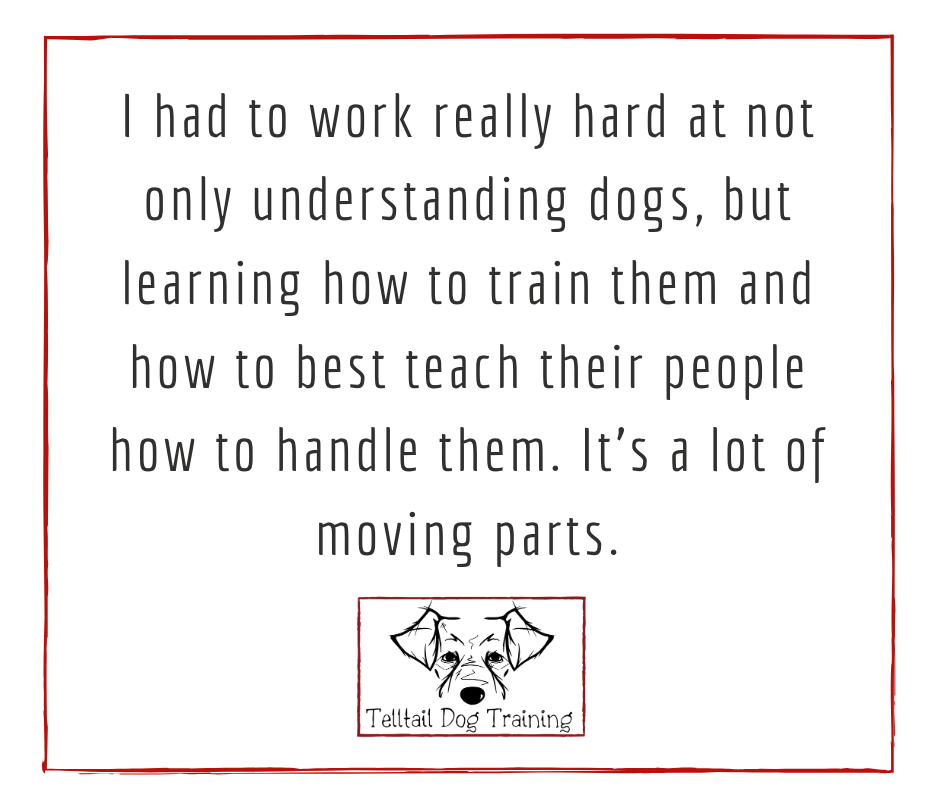
In fact, during my internship, I interacted with over 200 dogs within the first three or four months. By now, I’ve handled hundreds of dogs and logged in a few thousand hours. And all that time means that I’ve learned a thing or two.
There’s a few things happening when a dog listens to me but disregards their owner:
- Training, especially in a class setting, takes time.
I often coach students on expectations. If they’ve never trained with their dog at all, and they’re taking classes for the first time, there’s a learning curve that can take up to three or four class sessions to figure out.
Plus, everybody coming to class is learning–even me. I’m figuring out where the dog is, where the person is, and how both learn best. If the standard techniques don’t work, I’ve got a whole bunch more in my back pocket that I pull out if needed. But sometimes, the dog just needs a few seconds, and it’s my responsibility to build the space for patience, too.
- I’m a new and exciting person.
There’s the same routine every day. You may walk your dog on the same route, or your dog meets the same people, or your dog gets the same treats. Having a consistent schedule is great for dogs, but it also means that any changes, like a trip to the dog park, or meeting a new person, is very interesting. I’m fascinating because I’m different, so your dog is going to pay me more attention. Part of what I teach dog owners is how to get that puppy refocused when a distraction happens.
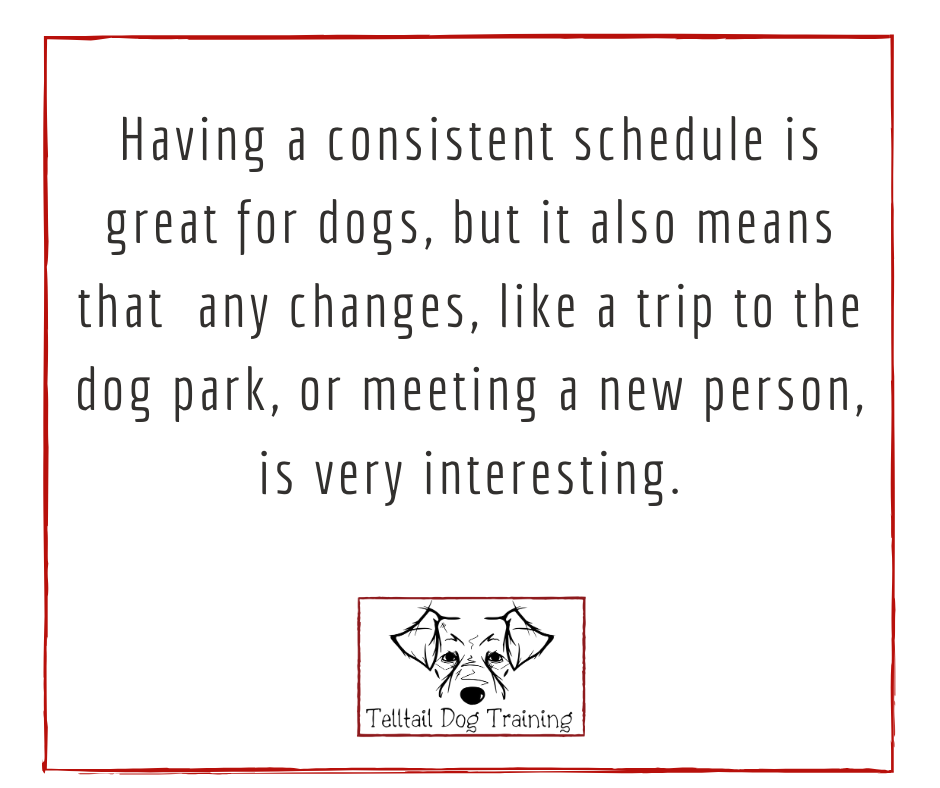
- I’ve studied dog body language.
I’ve spent a lot of time figuring out what dogs do, why they do it, and how to redirect it.
- I’m constantly adjusting my own body language and interactions.
I didn’t realize how much I do without thinking until I watched some videos I’d recorded of training sessions. I’d gotten into the practice of taking video while at the farm, since we posted daily videos and photos. When I was working at the doggy daycare, I took videos for the owners as well after training sessions, and started to pay attention more since I was breaking down the behaviors in each video. There were the usual things I expected, like how I tend to get ahead of jumping by moving my body and arms out of the way, but then there were the things I didn’t realize in the moment. I would use kissy sounds to get a dogs attention, or “uh uh” to deter a behavior, like jumping. Those are little things that crept in over the course of my dog training career, and take time to develop. There’s also timing and waiting for a dog to think something through and learning how to move treats from a lure to out of sight.
Of course, there’s also interacting with dogs without food at all, which happens now and again, like the corgi mix I’ve trained who prefers praise over food every time.
And the black lab in my neighborhood who roams for part of the day.
He doesn’t typically go very far, but he’s big and he’s loud. The first few times I encountered him, he barked up a storm, which was intimidating. I ignored him and simply walked away. When he stopped barking at me during our encounters, I offered the human equivalent of a play bow: I crouched a bit, leaning over. I then jogged backwards, inviting him to chase and play. His whole mood changed, and he wiggled his way up to me and let me pet him. Now, whenever I see him, he willingly comes to say hello. It took longer without structure and without food, but we became friends because I knew how to pay attention to his cues and let him progress at his own pace. And I learned that although he sounds loud and scary, he’s actually a big baby.
Caveat on loose dogs: Not all free-roaming dogs are safe to interact with, especially for children. Despite leash laws, there are a lot of dogs roaming free in Arkansas, especially in more rural areas. Dogs often use barking as an attempt to scare other people and dogs away, so walk away calmly if a dog is barking at you. If the dog is being persistent or targeting your dog with barking, try tossing a handful of treats at the other dog, and then leaving. Try to resist running, if possible. Running often incites chase. If the dog seems lost and you’re on your own, get your own dog to a safe place first or call local animal control if they exist in your area or the non-emergency line for the police department.
I’m no dog whisperer. But I learned. Now I teach others how to do the same.
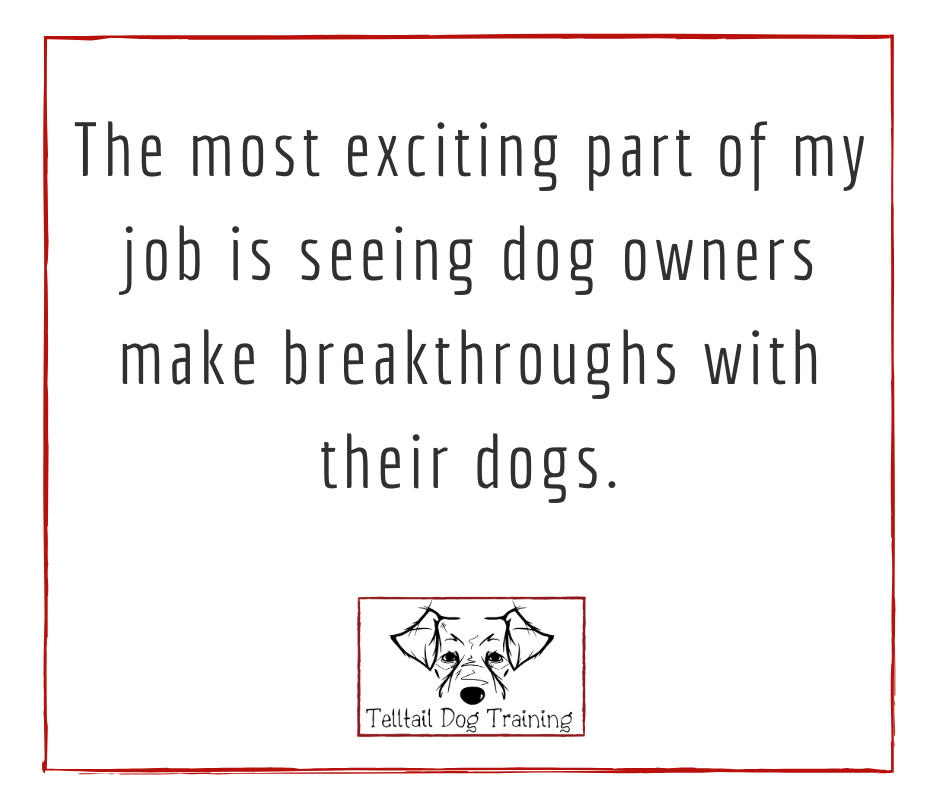
Group classes take place every Saturday at SoMa Animal Clinic. I also offer private in-home lessons in the Little Rock area and training walks for current clients. Email me at info@telltaildogtraining.com for more information.
Note: I’m saving puppy information and guidance for kids with dogs for January! I’ll be speaking with a few other experts on how to interact with a new puppy and what to expect. Since dogs tend to be a big part of Christmas, we want to provide the tools to aim for success.

